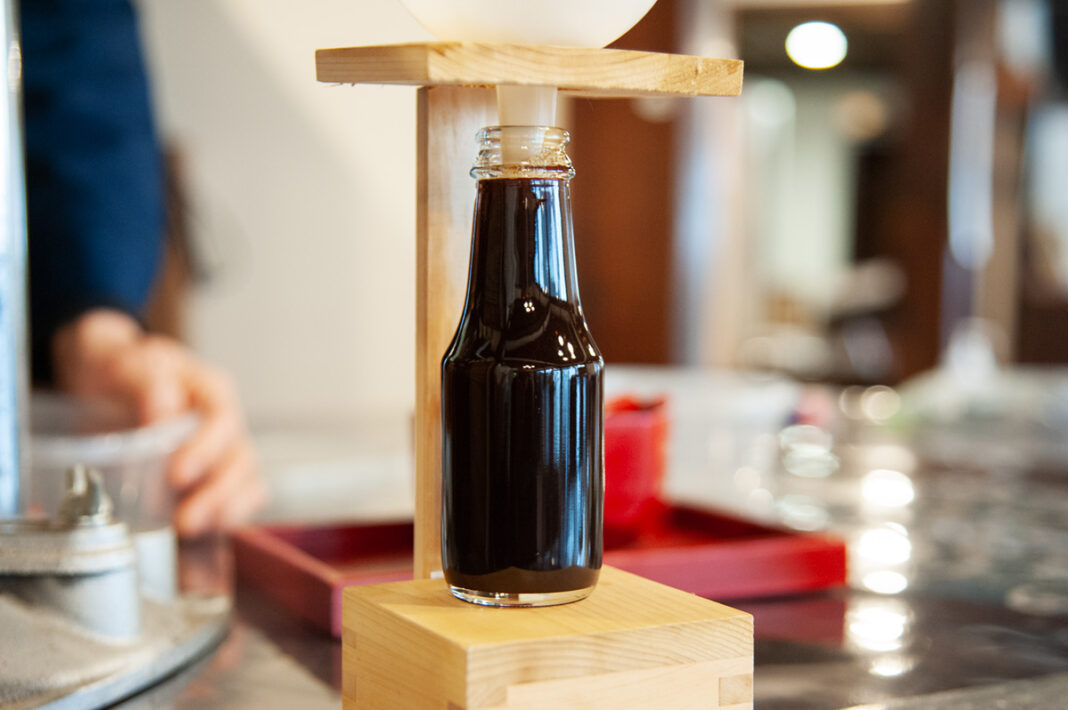Soy sauce is an essential staple of Japanese cuisine. No mouthful of sushi or sashimi is complete without a dip in rich and delicious soy sauce first. At Meijiya Shoyu, a historic soy sauce brewery in Hamamatsu, you can make your own bottle of soy sauce, the perfect souvenir from your trip to Shizuoka Prefecture. You can also take a fascinating tour of the 140 year old soy sauce brewery whilst learning all about how Japan’s beloved condiment is made.
Table of Contents
The History of the Meijiya Shoyu
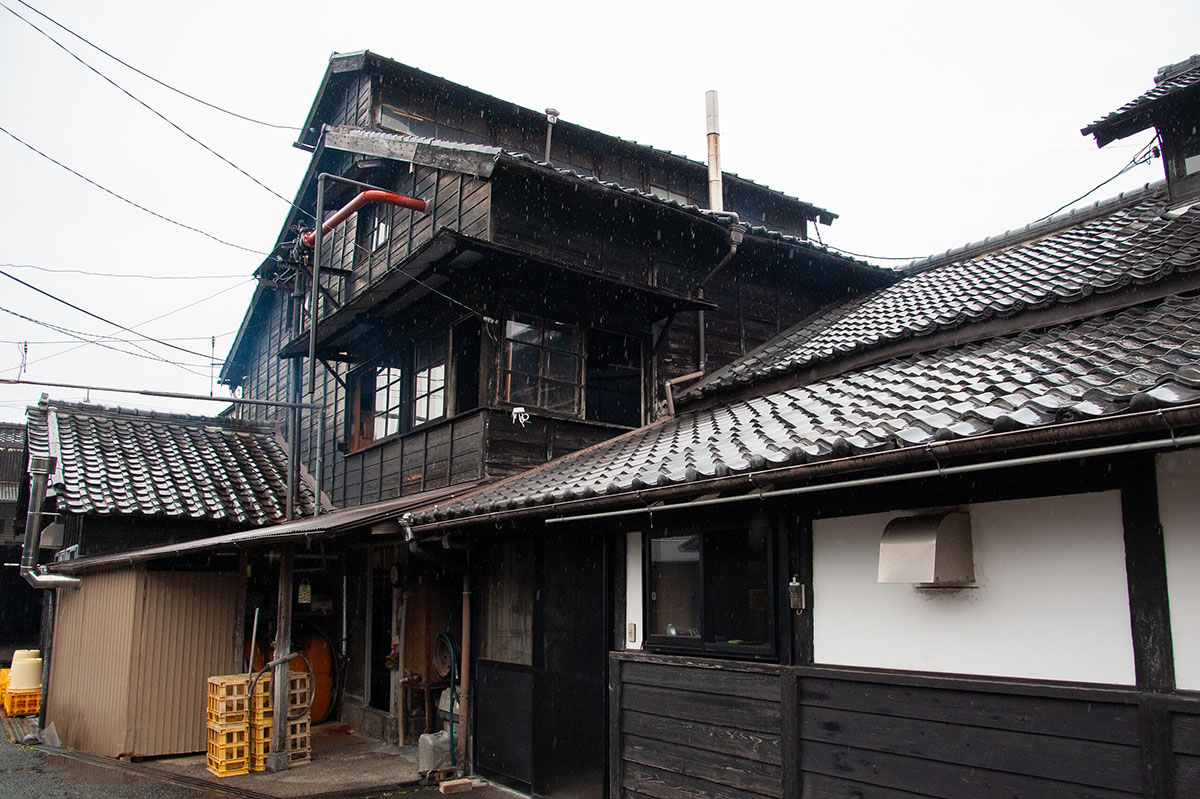
Meijiya Shoyu’s soy sauce brewery is located in a quiet residential area in the north of Hamamatsu, where it has been for over 140 years. Founded in 1875, the company’s current president is the fifth generation owner of the business. At the front of the Meijiya Shoyu complex is the first original building where the brewery was founded towards the end of the 19th Century. Later buildings have been added over time as the business expanded and as production methods developed through the generations.
Touring Meijiya Shoyu’s Brewery
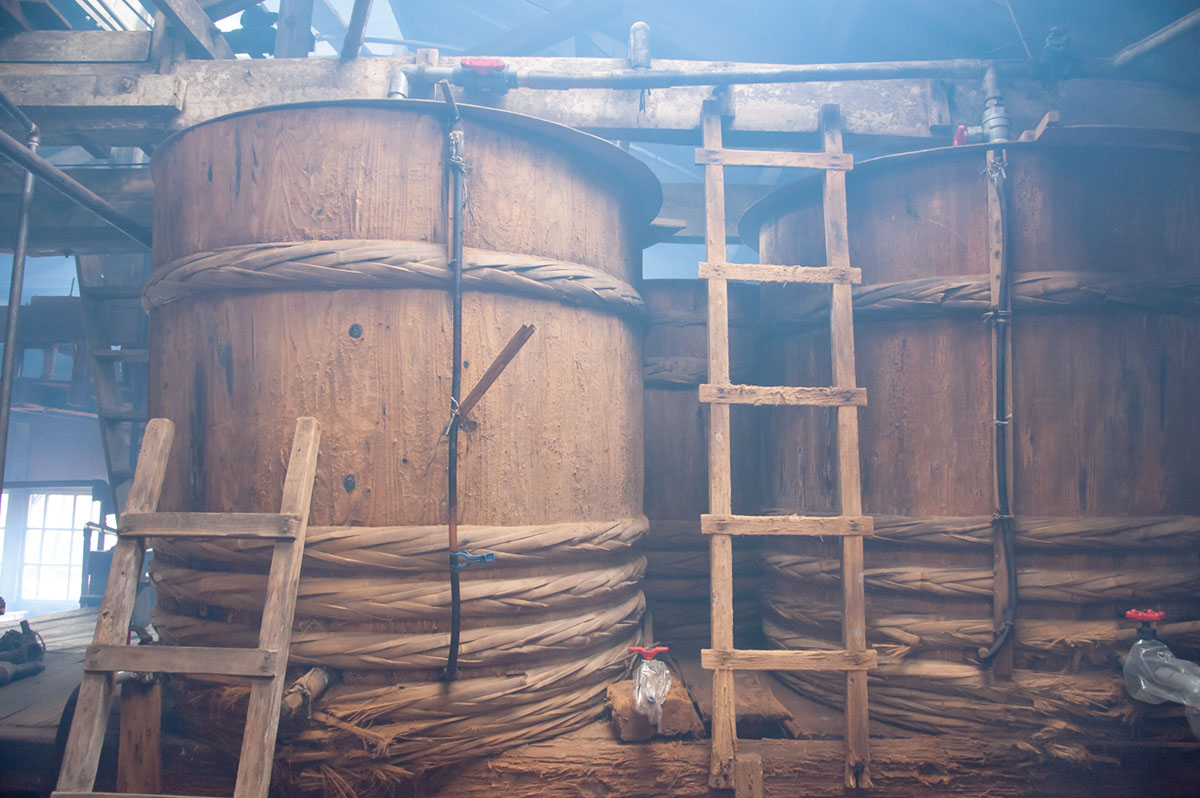
Before trying your hand at making your own bottle of soy sauce, there’s a fascinating tour of the Meijiya Shoyu brewery. Soy sauce is made from just a handful of ingredients, namely soybeans, steamed or roasted wheat, salt, and a special type of mold called koji. Stepping inside the brewery feels like stepping back in time. The interior of the brewery looks as though it hasn’t changed since the Meiji Period. In 2016 the factory was designated as a Tangible Cultural Property by the Japanese government.
The brewery is a warren of vast rooms filled with enormous barrels of ingredients and vats of slowly fermenting mash that will eventually become a rich and smooth soy sauce. On first impression, it seems like a miracle as to how anything gets made in what seems like a mishmash of cavernous rooms that appear to have no real order. In fact, the brewery has been purposefully and cleverly designed over many decades to be the perfect space for producing soy sauce.
How Soy Sauce is Made
The brewery tour is a fascinating insight into how soy sauce is made in a process that has hardly changed in generations. Before entering the brewery you can’t help but notice the unmistakable smell of soy sauce that fills the air. On entering the brewery, you are instantly thrown into the soy sauce making process in a building dripping with history.
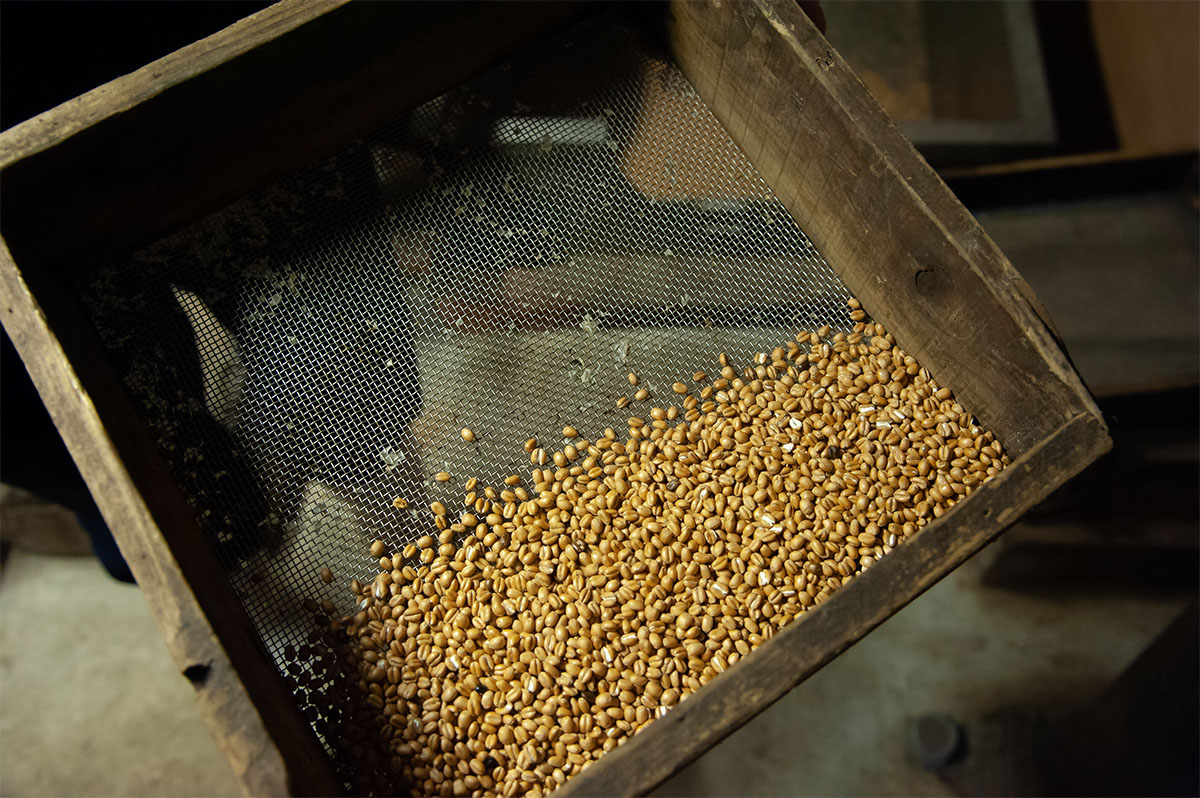
As soon as you walk into the brewery, you’re met by a jetstream of wheat shooting from a huge tank half hidden above head height into a piping hot oven to be roasted. There is a climb up an old wooden staircase to the first floor from the ground floor, where the roasted wheat is steamed inside huge wooden barrels with soybeans that have been soaked and boiled in water. The wheat and soybeans are later mixed with koji and water.
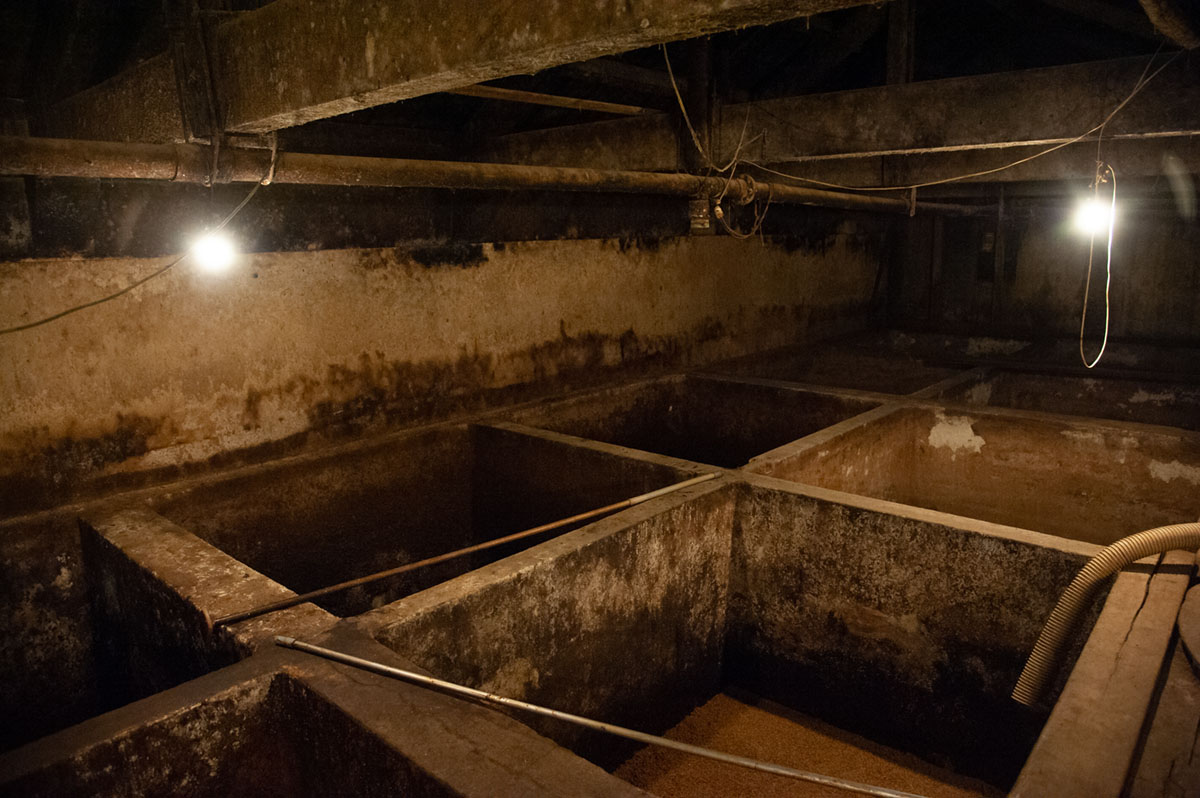
The tour then leads through a huge room full of massive sunken vats that look several meters deep. Inside each are various different mixes of the wheat, soybean, water, koji mash as well as salt. Meijiya Shoyu produces a wide range of different types of soy sauce, and depending on the final product these mixtures will sit and slowly ferment for between 18 months to three years. The mixtures need constant attention as well as stirring in order for the flavors to develop over that time.
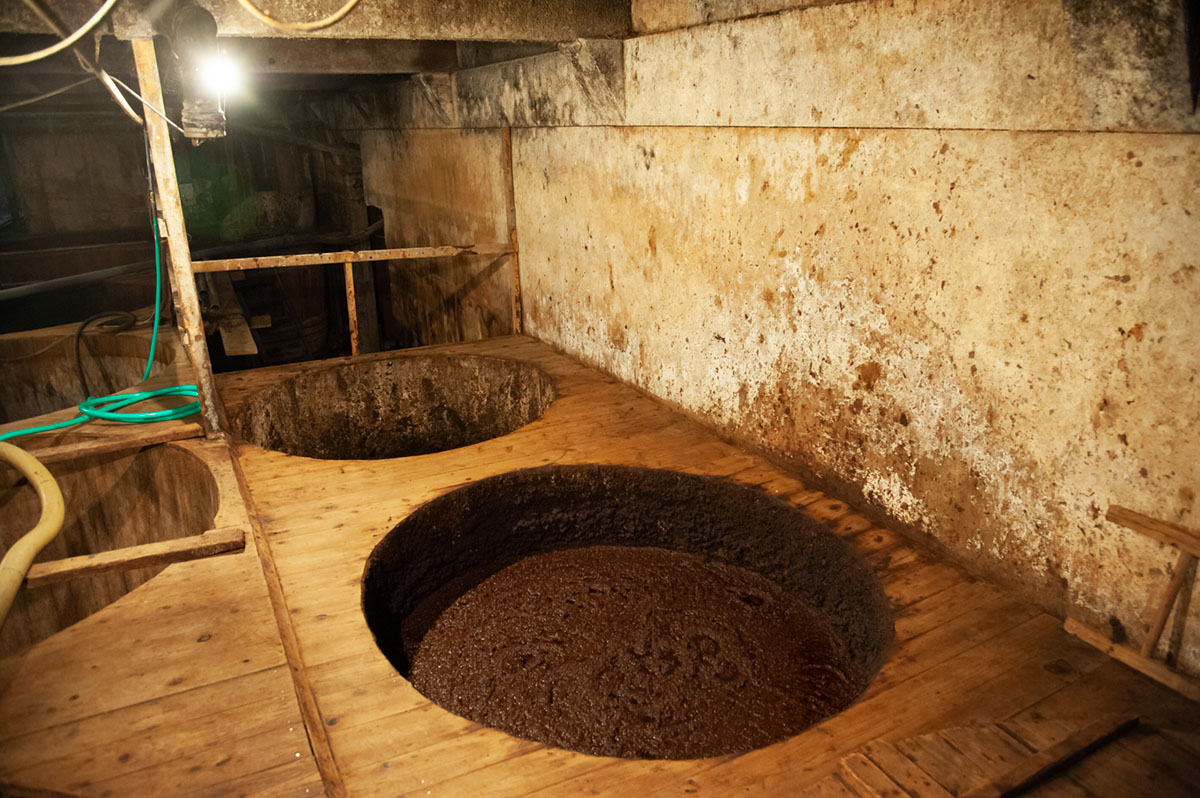
When it has been aged for the required amount of time, the fermented mash, which is called moromi, is ready to be processed into soy sauce. The moromi is removed from the vat and pressed through several layers of linen cloth. This is done in order to separate the sauce from any solids that are left behind in the final mixture. The sauce that is pressed out of the mixture is collected and the final stage is simply to heat the sauce to remove any remaining mold or yeast that might have been left behind.
Making Your Own Bottle of Soy Sauce
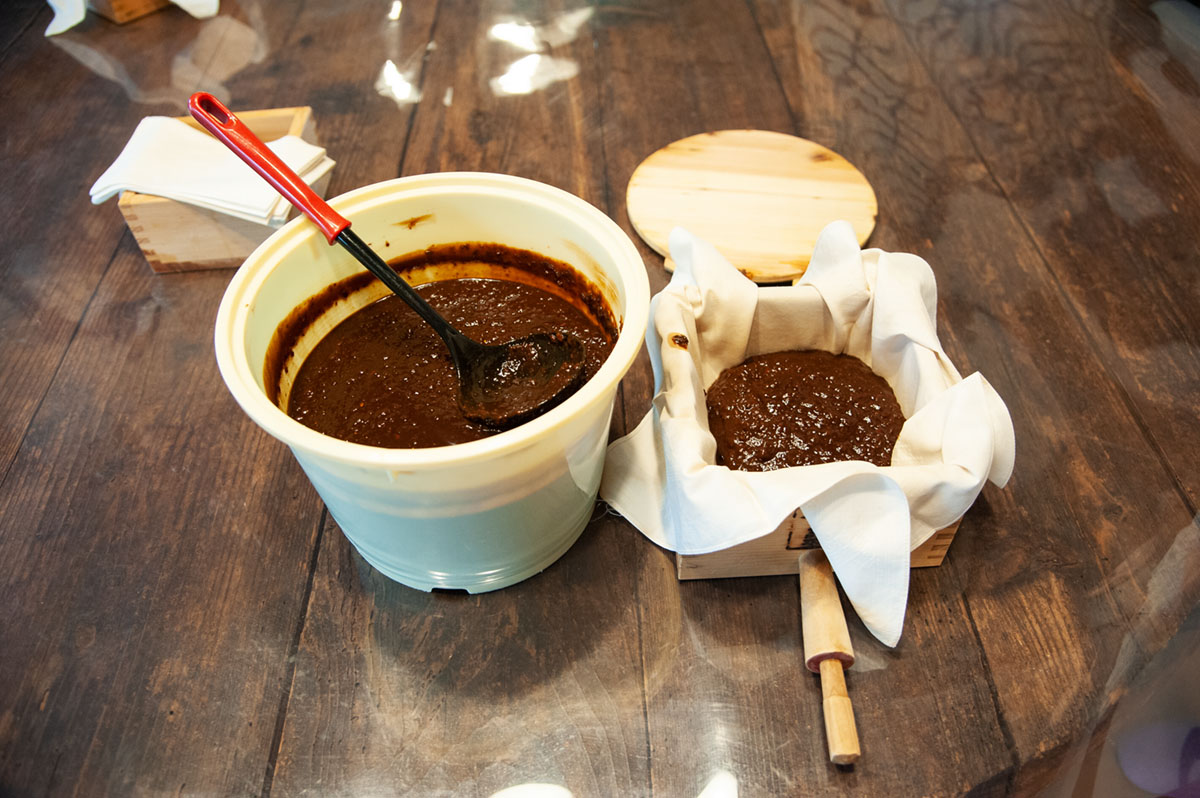
Opposite the main brewery building is Meijiya Shoyu’s modern visitor center and shop where you can make your own bottle of soy sauce. The process is essentially a greatly scaled down and shortened version of the same methods described in the main brewery and is a lot of fun. First, a tub of the thick fermented moromi mix of soybeans, wheat, salt and water is brought out as the base for the final bottle of soy sauce. This is part of a batch that has been brewed for around a year and a half.
Next, a layer of linen is laid out in a small wooden box and a few scoops of the moromi mixture is poured on top. The box has a spout which is blocked with a stopper. The soy sauce will eventually pour out from this spout. The moromi needs to be spread out into all four corners of the box and leveled so that the surface is flat and even before the linen is neatly folded over the moromi. This process is repeated two more times until there are three layers of the moromi mixture neatly wrapped inside the box.
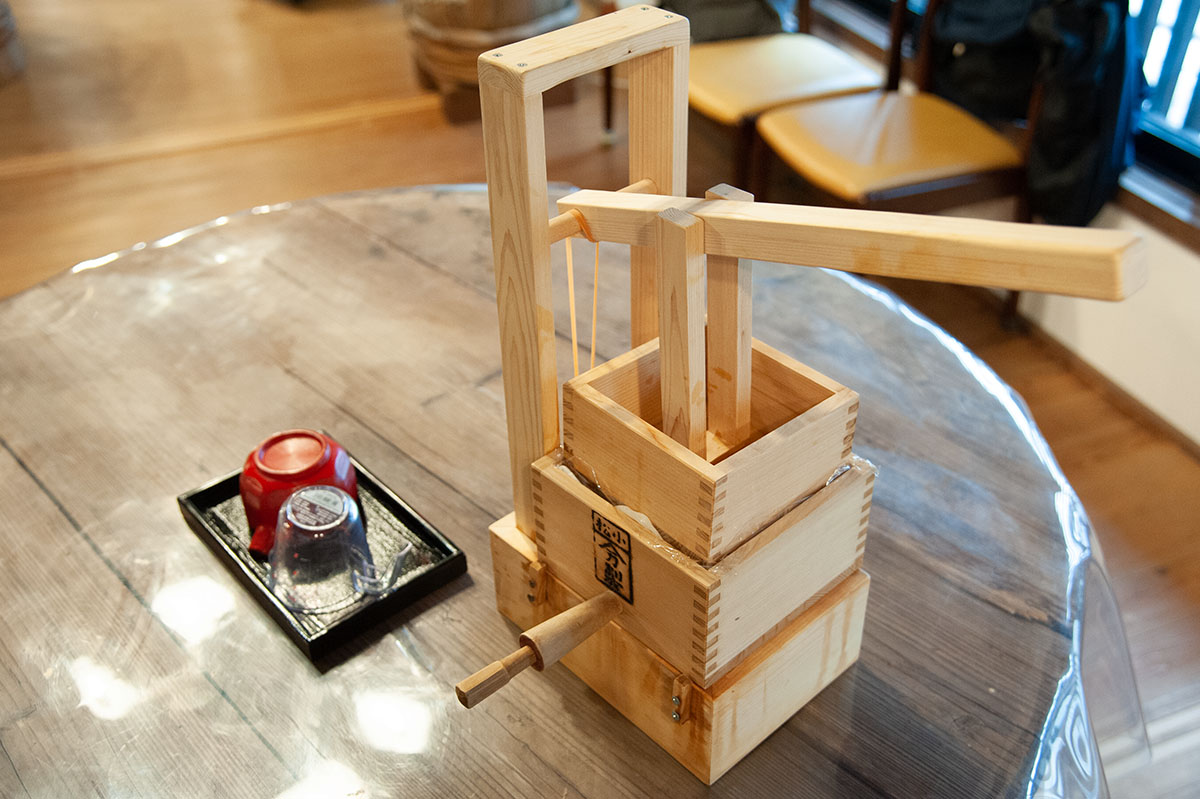
From here, the box is placed inside a purpose-made hand press. At the top of the press is a handle which is connected to a plate that pushes down onto the mixture inside the box. Force needs to be applied for around 30 seconds, after which time the soy sauce will have passed through the linen and separated from the moromi mixture. Remove the stopper from the spout and the freshly made soy sauce pours out of the box into a bowl.
The pressing process is repeated a few more times in order to get as much of the soy sauce from the mixture as possible. By the end, you’ll have just enough to fill a small bottle. The final step is to heat the soy sauce over a flame until it reaches 75 degrees, the right temperature to remove any lingering mold or yeast that may still be left.
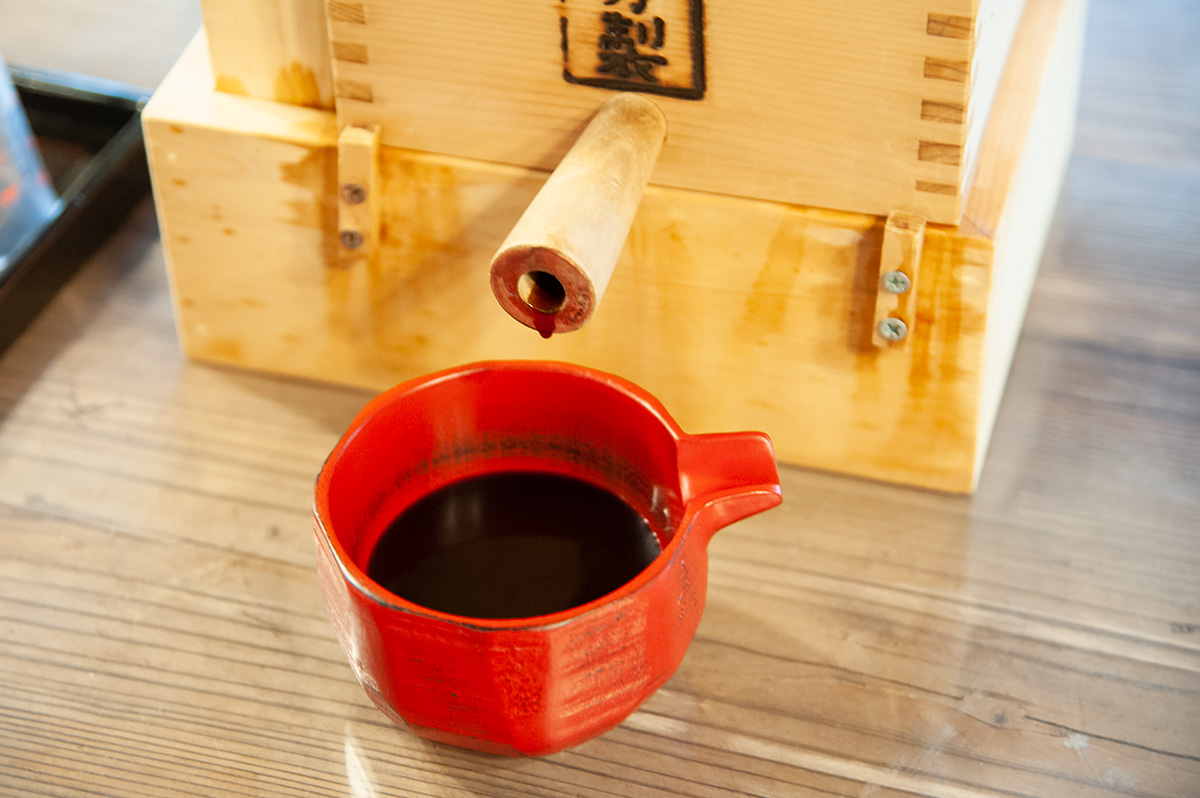
Then it’s time to bottle up the sauce, add a label and stamp on the expiry date. The finished bottle of soy sauce will be good to use for up to a year. Once opened make sure to store the soy sauce in the refrigerator. After you’ve made your own bottle, there’s the chance to sample a few of Meijiya Shoyu’s own professionally made soy sauces, as well as a gift of a few extra souvenirs to remember your visit.
How to Use Your Home Made Bottle of Soy Sauce

As well as being the perfect condiment for Japanese dishes such as sushi or gyoza, soy sauce can also be used as an ingredient in other dishes too. Why not try it as a marinade or as a way of adding a rich umami flavor to stews or pasta sauces? You could also add a dash to enhance gravy or even mix it with a vinaigrette for a salad dressing. Each time you add a splash of your own bottle of soy sauce to a dish, you’ll remember your trip to Hamamatsu and the historic Meijiya Shuyo Brewery.
Booking/Access
How to Make Your Own Bottle of Soy Sauce
You can make your own bottle of soy sauce at Meijiya Shoyu by booking through Explore Shizuoka. Click here for more information on the tour of the brewery and to book your own trip by completing the booking form at the bottom of the page.
How to Get to Meijiya Shoyu
The Meijiya Shoyu brewery is located in the north of Hamamatsu City. It’s around a 10 minute walk or 3 minute taxi ride to Meijiya Shoyu from Enshu-Komatsu Station, the nearest train station that is on the Enshu Railway. Enshu-Komatsu Station is a 20 minute train ride on the Enshu Railway line from Shin-Hamamatsu Station in the center of the city.
